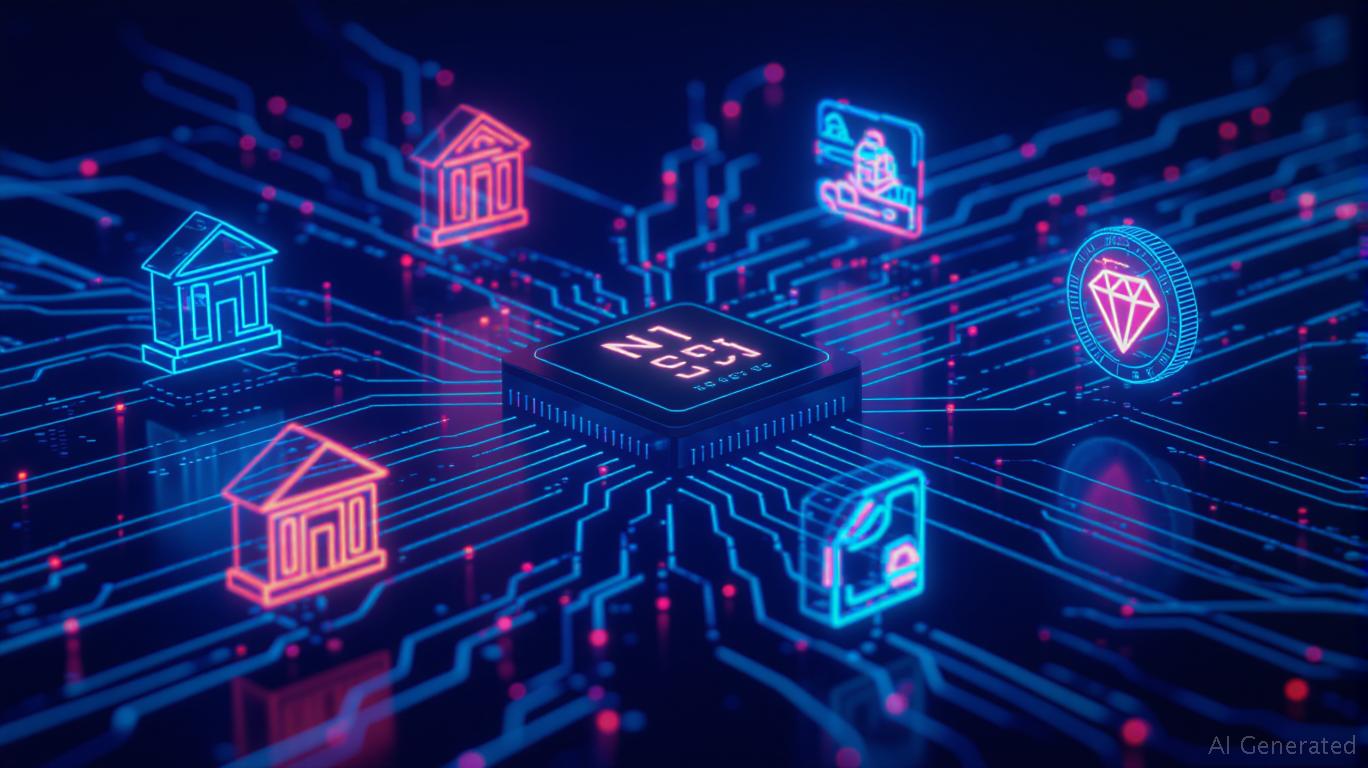NFTs' New Dawn: How Utility-Driven Assets and Blockchain Gaming Signal a Recovery
The NFT market, once synonymous with speculative mania and meme-driven hype, is undergoing a quiet transformation. Amid a broader consolidation phase, investors are shifting focus from speculative "JPEGs" to utility-driven real-world asset (RWA) NFTs and blockchain gaming projects positioned to capitalize on tangible value creation. This article explores why now is the time to consider these undervalued sectors—and how OpenSea's strategic airdrop is accelerating this shift.

The Rise of Utility-Driven RWAs: Yield, Liquidity, and Regulatory Clarity
The real-world asset NFT sector is emerging as the bedrock of this recovery. By tokenizing physical assets—from real estate to commodities—RWAs are unlocking liquidity in traditionally illiquid markets. Take Centrifuge's Tinlake protocol, which allows businesses to collateralize loans with verified RWA NFTs, or Tether Gold, which enables fractional ownership of gold reserves. These innovations have driven RWA NFTs' market cap to $24 billion in early 2025, up 61% from Q1, while the broader NFT market has stagnated ().
Crucially, regulatory tailwinds are now in play. The U.S. Senate's GENIUS Act, which provides a federal framework for digital assets, has bolstered institutional confidence. Major firms like BlackRock and VanEck are already deploying billions into RWA NFTs, with their BUIDL and VBILL funds offering yields of 4–10%—a stark contrast to the 1.5% offered by traditional Treasury bills.
Investment thesis: Look for RWA platforms with strong partnerships (e.g., Centrifuge's ties to DeFi lenders) and those tokenizing underpenetrated assets like infrastructure or renewable energy projects. These are poised to thrive as capital shifts toward yield-generating, real-world-backed assets.
Blockchain Gaming: From Hype to Play-to-Earn Reality
While the broader NFT market faces headwinds, gaming NFTs are thriving. Guild of Guardians—a project where players earn NFTs by completing quests—now dominates the top five NFT collections, surpassing legacy blue-chip projects like CryptoPunks. This shift reflects a fundamental truth: gaming NFTs are about utility, not speculation.
The sector's 31.92% CAGR (projected to grow from $5.69B in 2025 to $68.89B by 2034) is fueled by play-to-earn models and cross-platform interoperability. For instance, assets in The Sandbox or Decentraland can be traded across games, creating a vibrant secondary market. Meanwhile, OpenSea's $SEA token airdrop has incentivized trading of cheaper gaming NFTs, boosting Q2 volumes by 156% ().
Investment thesis: Prioritize games with proven user engagement and AI-driven content generation, which reduces development costs. Titles like Guild of Guardians and Illuvium—which leverage AI to create dynamic worlds—are early leaders. Avoid projects relying solely on NFT speculation; focus on those with real-world revenue streams (e.g., microtransactions, licensing deals).
The Accessibility Catalyst: Cheaper Art NFTs and OpenSea's Airdrop
The shift toward utility has also made NFTs more accessible. The average price of art NFTs has dropped to $100–$200, from over $5,000 in 2022, as investors prioritize projects with verifiable utility. Meanwhile, OpenSea's airdrop—a $SEA token grant to active traders—has drawn users to trade low-priced NFTs to maximize their rewards. This has created a virtuous cycle: cheaper NFTs attract more users, boosting liquidity and reducing volatility.
Risks and Entry Points
- Security: Web3 hacks surged to $6.3 billion in Q2 2025, underscoring the need for robust smart contract audits and custodial solutions.
- Regulatory Uncertainty: While the GENIUS Act is a step forward, compliance costs remain a hurdle for smaller projects.
Entry points:
1. RWA NFTs: Focus on platforms like Propy (real estate tokenization) or Maple Finance (decentralized credit).
2. Gaming: Invest in Guild of Guardians, Illuvium, or The Sandbox's land NFTs.
3. OpenSea: The $SEA token's airdrop has positioned it as a gateway to the broader ecosystem; track its adoption metrics closely.
Conclusion: A New Era of Value Creation
The NFT market's consolidation is not an endpoint but a reset. By shifting focus to utility-driven RWAs and gaming, investors can tap into sectors with real-world use cases, yield potential, and institutional backing. While risks remain, the data is clear: these areas are the engines of recovery. For the cautious investor, now is the time to buy into the future of decentralized ownership—and the sooner, the better.
Sign up for free to continue reading
By continuing, I agree to the
Market Data Terms of Service and Privacy Statement

Comments
No comments yet